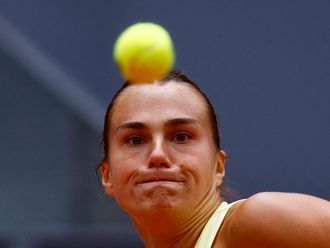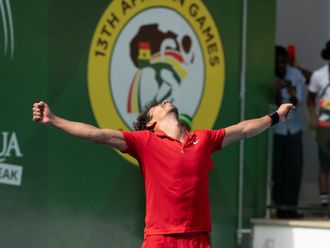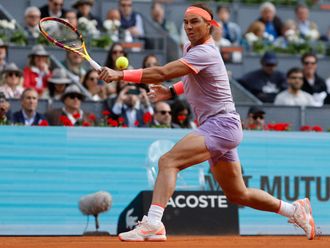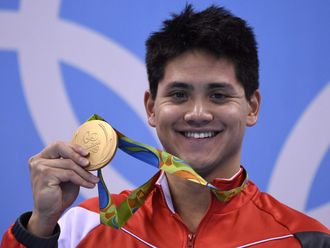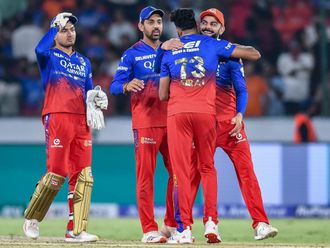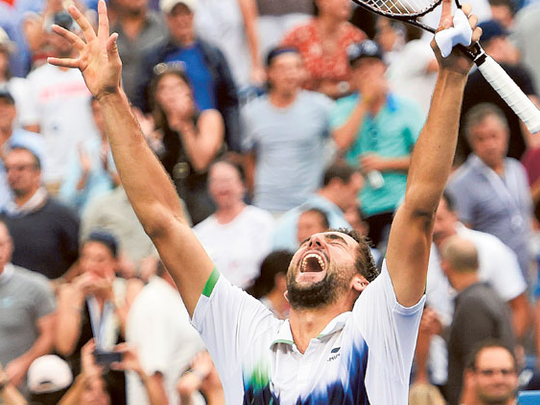
New York: It’s the US Open final that could hardly have been predicted — and nobody is more surprised than Japan’s Kei Nishikori, the first Asian man to make a Grand Slam final, who faces fellow first-timer Marin Cilic on Monday.
After top seeds Novak Djokovic and Roger Federer were disposed of in the semi-finals, the championship match will be the first not to feature Djokovic, Federer or Rafael Nadal since Australia in 2005.
It will also be the first in New York with two debutants since Pat Rafter beat Greg Rusedski in 1997.
No wonder Nishikori is still pinching himself after his 6-4, 1-6, 7-6 (7/4), 6-3 win over Djokovic.
“I am a little bit surprised for me to play the final,” said the 24-year-old, whose previous best Grand Slam run had been a quarter-final at the 2012 Australian Open.
His win over Djokovic, his second in three career meetings with the world number one, followed a five-set quarter-final triumph over fifth seed Milos Raonic and another five-set, four and a quarter-hour marathon against third-seeded Australian Open champion Stan Wawrinka.
His success comes despite him having to sit out the Toronto and Cincinnati Masters on the eve of the US Open to have a cyst removed from his toe, a painful problem which almost forced him to skip New York.
“I just started playing points a few days before the tournament. I didn’t even know if I should come to New York, so I wasn’t expecting anything,” said the 10th seed.
If form is any guide, then Nishikori should race away with the title as he boasts a 5-2 record over the 25-year-old Croat, including both meetings this year, on hard court in Brisbane and on Barcelona clay.
However, they have split their two past US Open duels, with Nishikori winning in 2010 and Cilic coming out on top two years ago.
“He’s been playing really well, very aggressive, very fast tennis. I know he’s been getting stronger,” said Nishikori, just one of many players who sharpened his skills at the Bollettieri academy in Florida.
The quietly-spoken Japanese has come a long way since his arrival in the US a decade ago not knowing a word of English.
Cilic too has endured a tough journey of his own over the last year, albeit a more controversial one.
The 25-year-old 14th seed missed the 2013 US Open to serve a doping ban handed out after he tested positive for a banned stimulant contained in an over-the-counter supplement.
Fired up by indignation over the way the case was handled, Cilic is a man on a mission, having bettered his previous Grand Slam best of a semi-final spot at the 2010 Australian Open.
Playing in his 28th Grand Slam event, Cilic, however, wondered if his time in the biggest spotlight would ever come.
“When you are young on the tour you always feel you have enough time,” said Cilic after his 6-3, 6-4, 6-4 rout of Federer.
“You have a lot of Grand Slams. You’re going to do well. But when the time starts to pass by, you are more anxious if it’s going to happen or it’s not going to happen.”
Cilic, who is coached by 2001 Wimbledon champion Goran Ivanisevic, believes the final will come down to a tactical duel.
“Kei hits the ball extremely well from the back of the court. I think I’m going to have to just focus on my game to break that little bit of rhythm and to try to serve well,” he said.
Monday’s final also offers up a contrasting clash of styles between the 5ft 10in (1.78m), 150lbs (68kg) Nishikori and the bigger, heavier 6ft 6in (1.98m), 180lbs (82kg) Cilic.
Power may often trump style on a fast hard court, but Michael Chang, the 1989 French Open champion who now coaches Nishikori, believes his man may have the edge.
“Taller guys have certain things that make it a little easier for them, the serve, but smaller guys have the ability to be a little quicker around the court, a little more agile a little more nimble. There’s always different ways to neutralise power,” said Chang.


